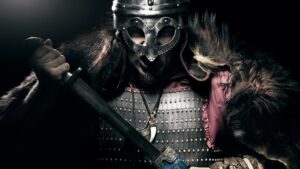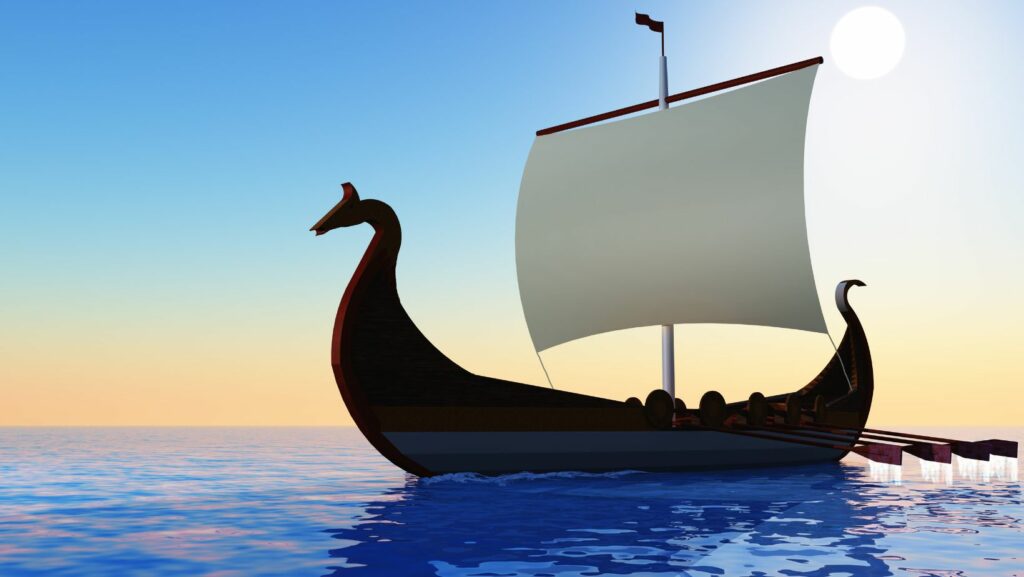Dive into the world of the Viking lifestyle, a fascinating civilization known for its fierce warriors and intrepid explorers. This article will take you on a journey through the Viking lifestyle, shedding light on their unique practices and cultural norms.
Viking Lifestyle
The Vikings, originating from Scandinavia, thrived from the late 8th to early 11th century. Immersion in their historical context allows an authentic understanding of their peculiar lifestyle. Celebrated for their nautical skills, they journeyed across Europe, Asia, and North America in search of new territories and trade opportunities.
Given the era’s lack of technology, this level of exploration proved their mettle and willingness to venture into the unknown. Additionally, their impact on the lands they visited, traded with, or invaded, resonates till today with influences visible in regional languages, genetics, and art.
Daily Life of the Vikings
 Contrary to the conventional image of Vikings as ruthless warriors, their day-to-day life was largely typical of the era, with a major focus on subsistence rather than conquest. Daily activities revolved around farming, hunting, and crafting, with cattle, sheep, and pigs being the primary livestock.
Contrary to the conventional image of Vikings as ruthless warriors, their day-to-day life was largely typical of the era, with a major focus on subsistence rather than conquest. Daily activities revolved around farming, hunting, and crafting, with cattle, sheep, and pigs being the primary livestock.
Family played a central role in the Viking society, with each member contributing to household duties. Men focused on hunting, fishing, and building, while women managed the home, tended to livestock, and even participated in trade.
Religion held a significant place, with Norse mythology deeply interwoven in their customs, rituals, and moral codes. Viking laws and justice systems were advanced for their time, highlighting their intricate societal structure.
Viking Social Structure
Roles within the Viking Community
In the Viking communities, everyone had precise roles than rested on factors including gender, social status, and age. At the top of the ladder were the Chieftains. They were the ruling elite, their authority often encompassing multiple villages. Positioned beneath them were the free men and women, commonly referred to as Karls. The Karls typically owned land, raised families, and engaged in trades like farming, fishing, or blacksmithing.
The Family Unit in Viking Society
Viking societal dynamics were not entirely different from other societies, with the family unit playing a pivotal role. This unit typically comprised a couple, their children, and occasionally, extended relatives. Men were mostly responsible for outdoor activities like hunting and trading while women managed the household, agriculture, and child-rearing. To clarify, a Viking woman might weave cloth, cultivate the garden, prepare food, or even supervise the farm in her husband’s absence.
Moreover, women in Viking society had considerable rights, even faring better than their counterparts in other societies of the same era. They could own property, request a divorce, and were listened to in matters of dispute.
Economic Activities of the Vikings
Agriculture and Animal Husbandry
 In Viking society, farming was a prevalent occupation. A sizeable portion of the Viking population, primarily Karls, devoted their time and efforts to agricultural activities. These activities primarily included the cultivation of barley, rye, and oats. Additionally, pulses and vegetables, such as peas, beans, cabbage, and onions, constituted the Viking’s farming produce.
In Viking society, farming was a prevalent occupation. A sizeable portion of the Viking population, primarily Karls, devoted their time and efforts to agricultural activities. These activities primarily included the cultivation of barley, rye, and oats. Additionally, pulses and vegetables, such as peas, beans, cabbage, and onions, constituted the Viking’s farming produce.
Their agricultural pursuits didn’t end there—Viking society also engaged in animal husbandry. Keeping an array of domestic animals, like cows, goats, sheep, pigs, poultry, and horses, offered them not only sustenance but also resources for trade.
Trade and Exploration
Trade was another pivotal feature of the Viking economy. Trading occurred on both a local and international scale. On a local level, farmers commonly exchanged their agricultural produce and livestock commodities amongst themselves. On a more global level, Vikings began to explore beyond their homelands in search of wealth and prosperity.
Notorious for their longboats, Vikings journeyed across seas and rivers, initiating contact with far-off lands. Rich territories, such as Britain, France, Eastern Europe, and even the distant Baghdad, turned into prominent trade destinations for these Nordic seafarers.
What You Need To Know
It’s clear that the Viking lifestyle was one of resilience, adaptability, and strategic thinking. Their hierarchical social structure and balanced family dynamics laid a strong foundation for their survival. Their economic activities, featuring agriculture, animal husbandry, and trade, further demonstrated their robust adaptability.

